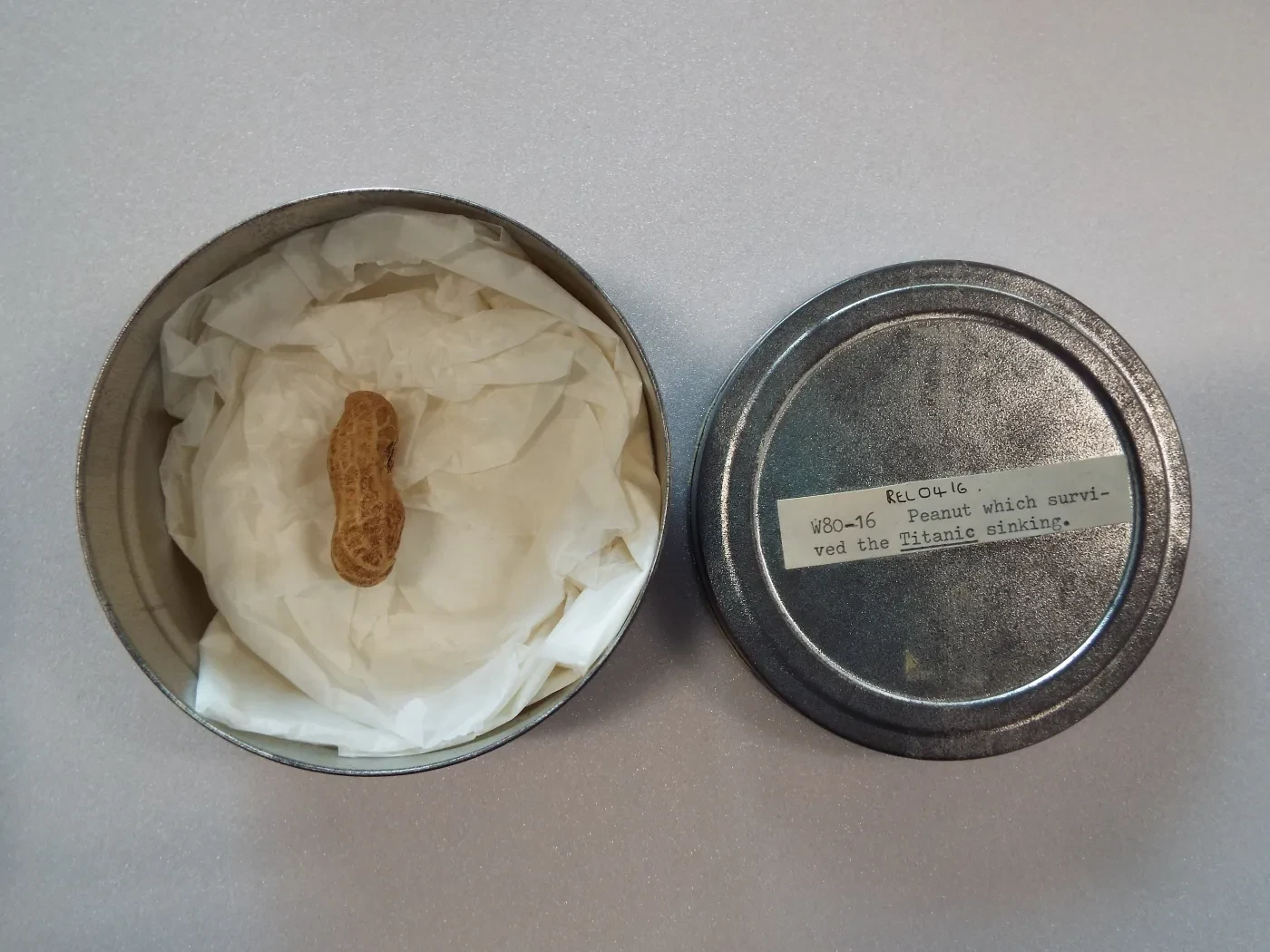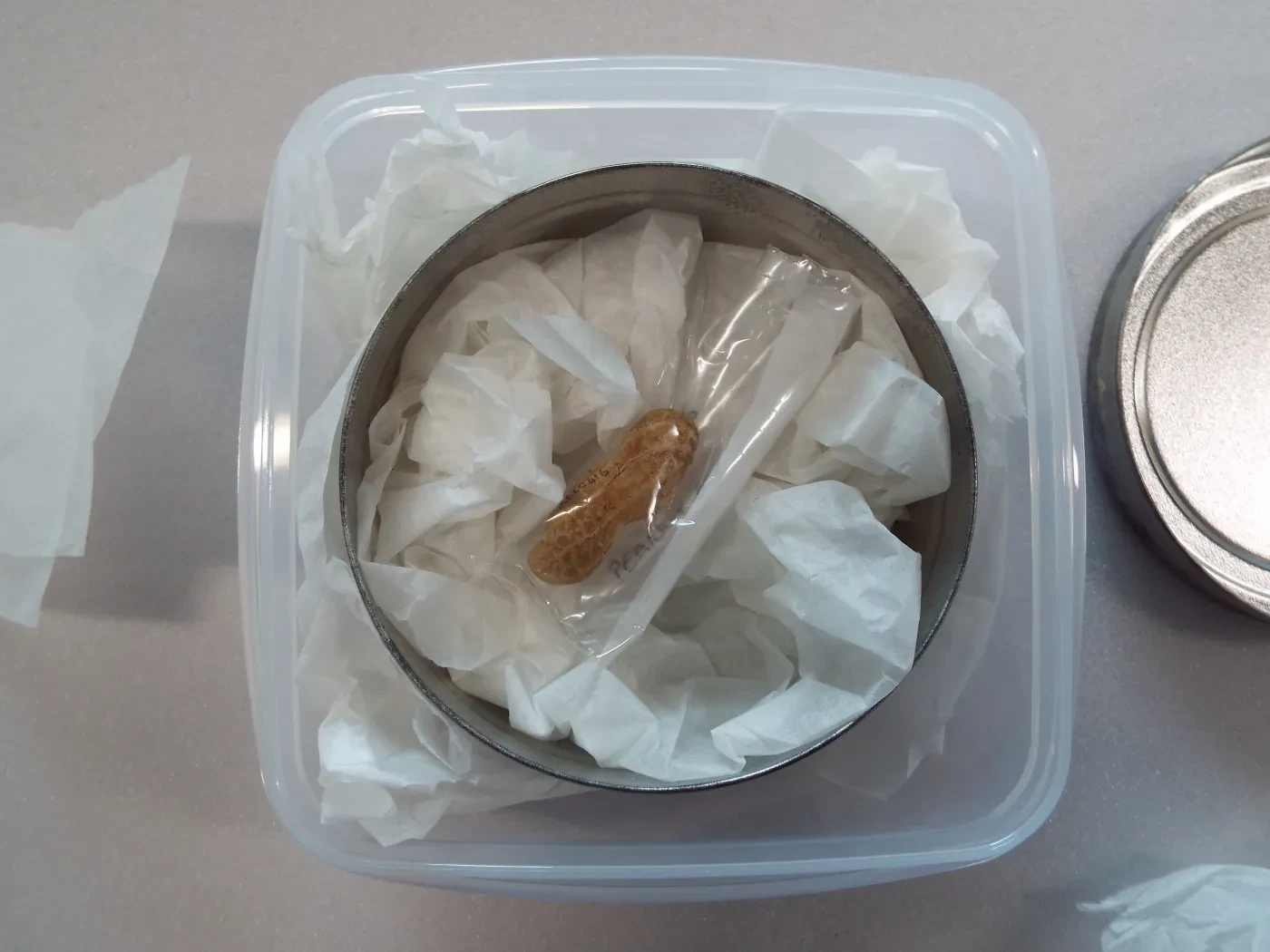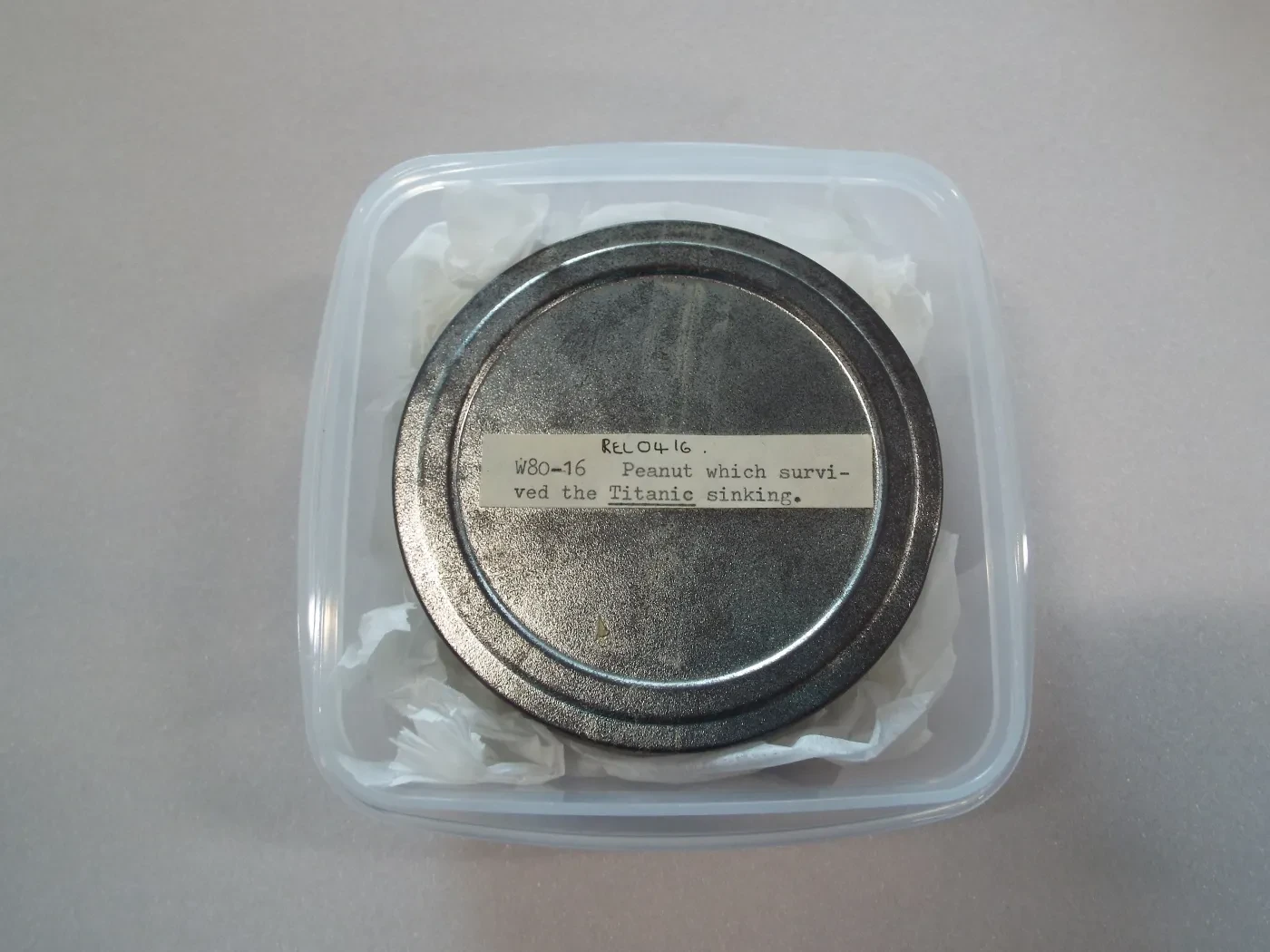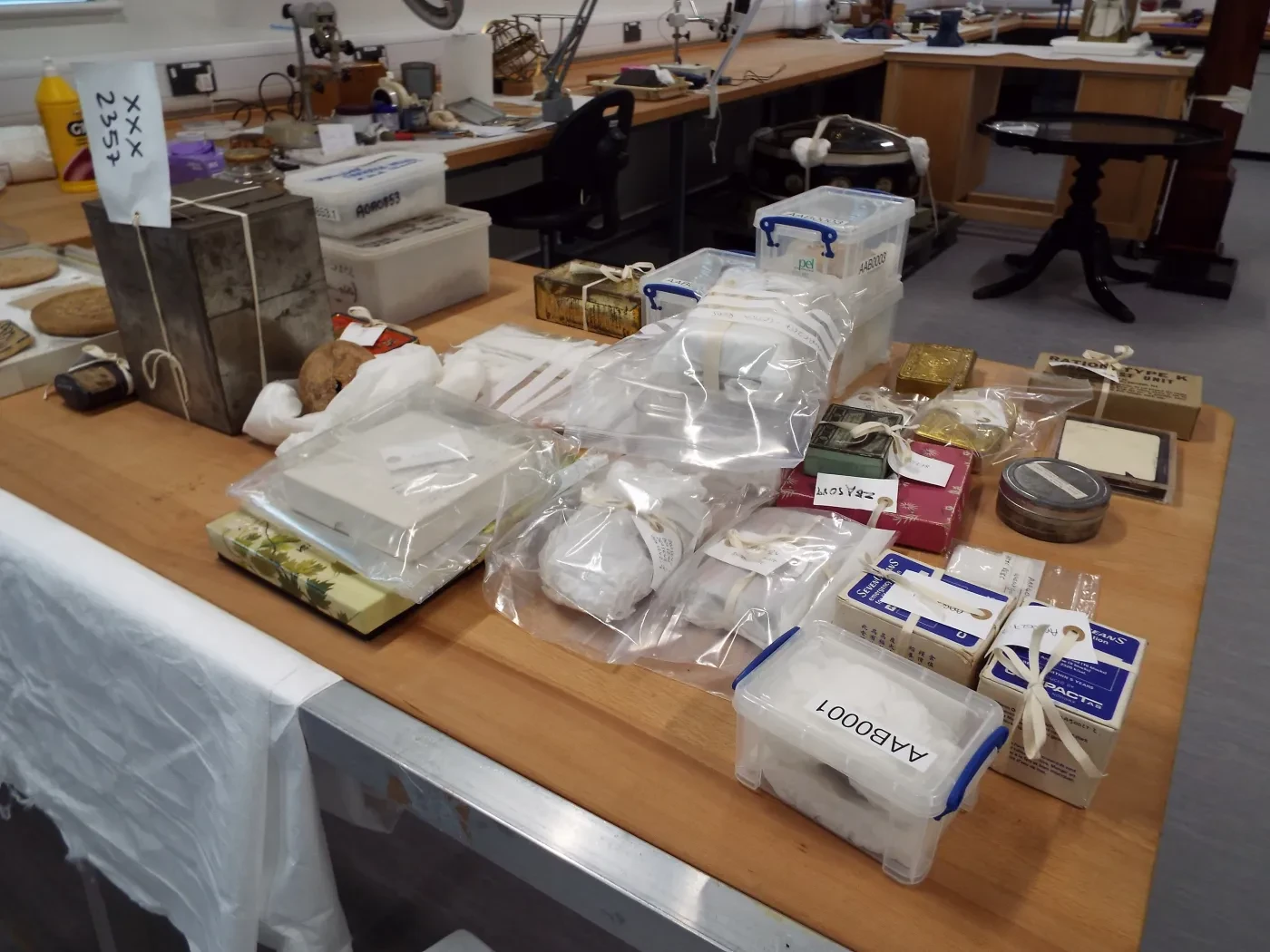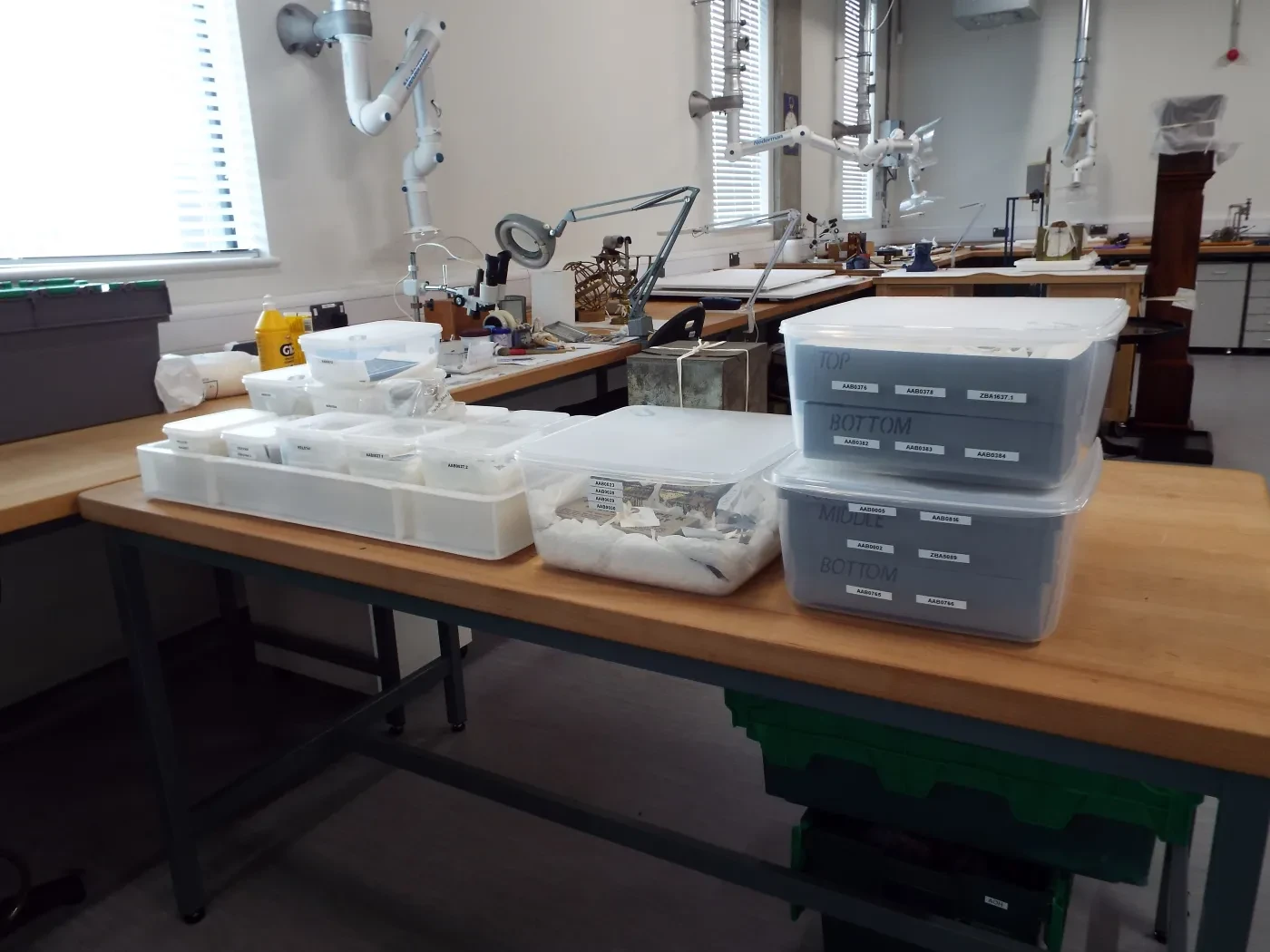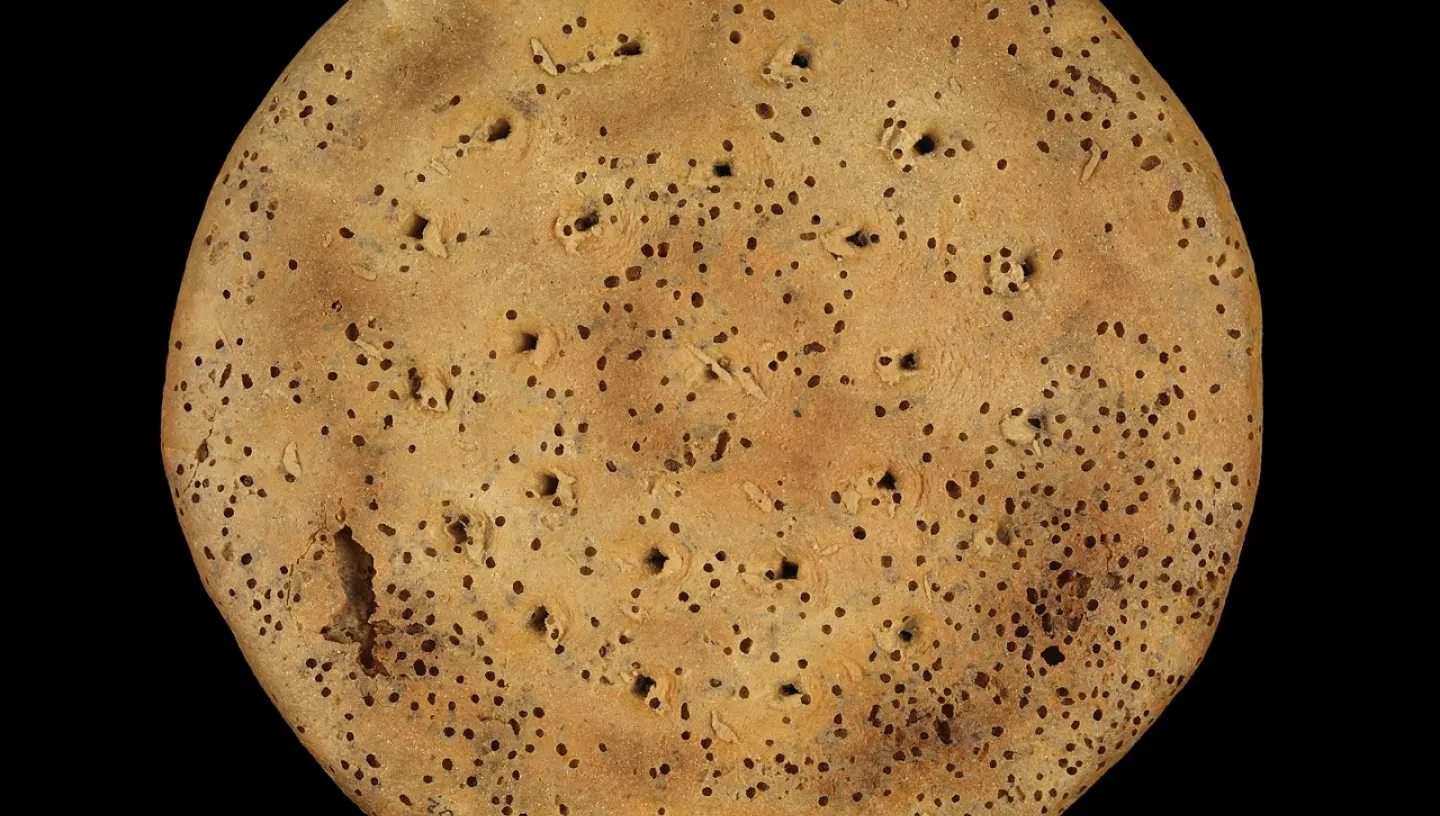
Collections Storage Officer Louise Bascombe and Object Conservation Manager Karen Jensen illuminate the history and future of some of the most vulnerable items in the collection and show how work continued safely behind the scenes while the museum was closed in 2020.
Food is perhaps not the first thing that springs to mind when visiting the National Maritime Museum, but the items in the collection simply reflect the role of food as not only an absolute necessity to living, especially during long voyages or explorations into the unknown, but also as a medium of commemorating important events, such as the sinking of a ship or a voyage to the North Pole.
Types of food in our collection include: ship’s biscuits (AAB0003), bread (AAB0001), commemorative icing (AAB0795), chocolate (ZBA2144), tinned food (AAA4305), dried soup (AAB0012) and emergency rations (AAB0027), just to name a few. All these items each have their individual stories, which you can explore through our Collections Online. Many of these are also out on display in our Nelson, Navy, Nation and Polar Worlds Galleries – so keep an eye out when you visit!
We will also be exploring our food collections more during Heritage Open Days (September 13-18), as the theme this year is ‘Edible England’.
Find out more about the Heritage Open Days tours
The pest problem
Whether on display or in storage, however, all of our food items share a common problem. They are all incredibly delicious. Not to humans anymore, but to an insect, they are full of all the nutrients a growing pest could need.
Interest from insects in particular, has long been a problem with this type of material and some of the most susceptible items in the collection are our ship's biscuits, which are incredibly inviting to the aptly named Biscuit Beetle larvae.
As you can see from the example below, these items can become absolutely riddled with munch-holes and after a while could be at risk of deteriorating or disappearing completely!
Much of the damage seen in our collection is from a long time ago, before it even got into the museum’s collections, but unfortunately damage can happen very suddenly if unnoticed and left unchecked.
Protecting the edible items
The best way to keep these items safe is to try and make sure they are not targeted in the first place. As they say, prevention is better than a cure.
This project, therefore, aimed to shield the food items from pests by rehousing them in sealed containers, that will not allow any insect in – no matter how small. The new boxes, made from inert materials that will not chemically affect the organic items inside, also provide greater protection from handling, which can sometimes damage an object if done improperly or carelessly, as the food will be much easier to view without leaving the box. This project also led to the creation of a space to specifically house them all together, so that we can easily and more regularly check up on this material.
Some items were housed together by type, for example the large ship’s biscuits or tobacco items, and were placed into easily removable trays that can be lifted out for closer inspection.
Others got their own individual boxes that, like before, have been padded out for their protection. White acid-free tissue paper was used, as it would show any debris that might fall off the object and indicate a potential pest issue.
A tricky item to rehouse was this tea caddy (XXX2357), which previously had loose leaf tea rattling inside of it. A decision was made to remove the leaves from the caddy and to box them up separately, so that they could be monitored. This was an especially good idea, as getting them out of the tin in the first place was very difficult – the lid was stuck fast!
Before and after rehousing
The entire process was a lot of fun and it was so satisfying to see these objects placed into boxes that are such a vast improvement on their old storage containers. They now look very smart and the food is now not only safer, but also much more accessible and will protect these objects for many years to come.
Our great thanks to Maria Bastidas-Spence and Seb Cotton, who were the other members of the team working on the rehousing and helped see it through to its completion.







